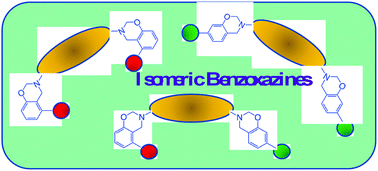Electronic effects of asymmetric and meta-alkoxy substituents on the polymerization behavior of bis-benzoxazines
Abstract
Three isomers of benzoxazine monomers based on m-alkoxyphenol and 4,4′-methylenedianiline were synthesized and successfully isolated by column chromatography. The molecular structures of benzoxazine monomers were confirmed by proton nuclear magnetic resonance (1H NMR) and Fourier-transform infrared (FT-IR) spectroscopy. The polymerization behavior evaluated by differential scanning calorimetry (DSC) shows that the asymmetric isomer, which has a methoxy group at the 5-position and 7-positions (5,7′MO-ddm), has only one exothermic peak between temperatures of the other two symmetric isomers. The 1H NMR spectrum of monomers shows that the type and position of alkoxy groups can exert different effects on the electron density of the oxazine ring, and may result in a sensitive trend of ring-opening. The difference in electron densities was verified by the Gaussian simulation calculation results of natural charges. In this work, we provide a fundamental molecular-level understanding of the polymerization mechanism of asymmetric bis-benzoxazines, which can provide possibilities for designing new benzoxazines in order to solve the potential disadvantages of benzoxazines/polybenzoxazines and/or enhance their advantages.



 Please wait while we load your content...
Please wait while we load your content...